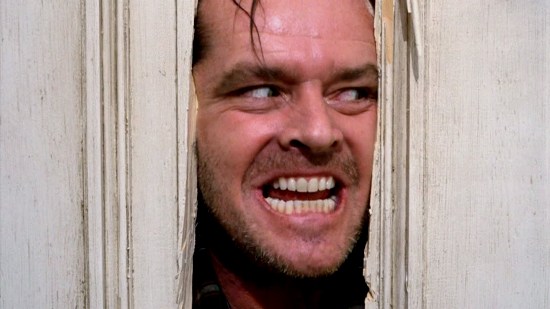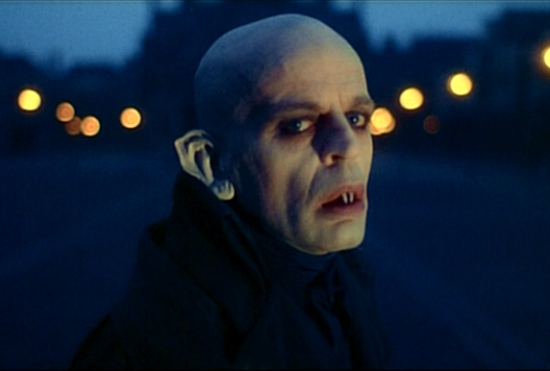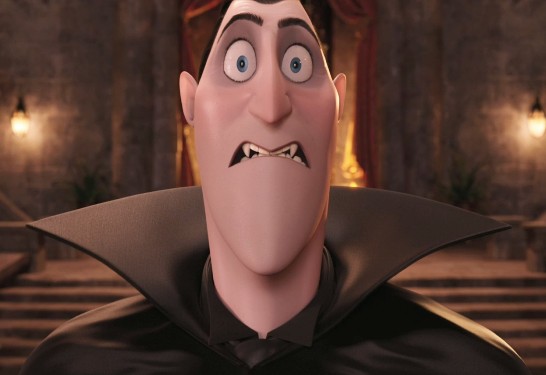You’ve heard the old adage about movies adapted from other material; that the book was better. In many case that is almost certainly true. Books and movies live by different rules, and when the story itself is highly complex, it’s more than likely that a book will more satisfactorily accomplish what the story needs to do. With books, the reader return to a story through multiple sittings, and absorb all of the material at their own leisure. Movies on the other hand have to accomplish the same feat, but within an unyielding two hour time frame; three hours if they’re lucky. To make this happen, the filmmaker has to do the drastic move of cutting or just outright changing whole pieces of the story in order to make it fit within the confines of it’s run-time. Some things are easy to get rid of, like a character’s inner monologue, but then again, a filmmaker also runs the risk of changing the wrong things, and completely changing the intent of the story overall. It’s a tricky tightrope for filmmakers to accomplish, and yet adaptations have dominated the Hollywood landscape since the very beginning. Indeed, it seems like today that Hollywood is more likely to adapt an already proven bestselling title rather than come up with something completely original. But, on the other hand, there are novels that lend themselves perfectly over to film and one hopes that it falls into the hands of the right filmmaker.
Given all this, I have decided to begin a new series of articles where I look at some of the more famous translations between the written word and the big screen. With these articles I hope to showcase the many interesting ways that stories evolve between the two mediums. Also, to make this series a little more interesting, I will also be reading the source novels beforehand as well as watching, or re-watching the movies. Primarily, I want to read books that I haven’t read before and see how much it and the movie line up together. More than likely the books I read will be from movies that I have already seen, but there might be cases in future articles where I will be going into both cold, which might give me a very different reaction to both altogether. For the most part, I just want to use this as an incentive to get me reading more books and allow me to share my thoughts on both with you the reader, in the hopes that it will help you see the value in each, and how the process of adaptation works. For this inaugural article, I took it upon myself to look at an appropriately dark and Gothic story that fits very well the mood of this Halloween season. It’s Stephen King’s 1978 classic, The Shining, which of course was turned into an equally renowned 1980 film adaptation of the same name directed by Stanley Kubrick. The reason why I chose to look at these two is because of the differences between the two; differences of which created a rift between the filmmaker and the author. Did Kubrick change too much of King’s novel? Did he change enough to make the film better or less than the novel? Is the book indeed better than the movie? After reading both the novel and re-watching the movie, the results surprisingly are more complicated than you’d expect.
“Some places are like people; some shine and some don’t.”
The truth is that both are brilliant pieces of work in their own right, though neither will give you the entirely same experience of the other. They are like two different views of the same events, told in their own author’s particular style. Kubrick removes some of King’s more famous supernatural elements, while at the same time adding some of his own. And while that may tick off some King purists, many people have actually seen Kubrick’s additions as improvements. I won’t lie and say that during my read of the novel, I was actually looking for those famous moments from the movie, and was just a bit let down when they didn’t appear. But, that’s not to say that the book itself let me down. There was a lot of things that the novel itself had that made me wish they were in the movie. In particular, Stephen King conveys a lot more of the evil presence of the Overlook Hotel in his novel, with vivid descriptions of all the noises and disembodied voices that haunt the main characters throughout the story. It’s unfortunate that stuff like that gets lost in translation, but at the same time, you can easily see why Kubrick made the changes he did. Kubrick himself was very selective with his choices of projects, and usually he was more inclined to work outside the Hollywood system and make movies with risque themes and content. But, with King’s novel, this became a rare case where Kubrick could take on a commercially proven property and still satisfy his artistic tastes. And indeed, Kubrick’s mark is all over the finished film, creating a truly memorable and chilling adaptation of the novel.
Unfortunately, one of the film’s biggest detractors was Stephen King himself. He didn’t like Kubrick’s version of his story at all and for many years he dismissed the project as a perversion of his novel. Years later, King would himself undertake an adaptation in a three part miniseries made for TV. The 1997 miniseries starred Steven Weber of Wings fame and it stuck much closer to King’s original vision. Though King himself was satisfied, audiences were not, and the miniseries was critically panned. The unfortunate thing for Stephen King was the fact that Kubrick’s movie had become such a beloved classic overtime, with many of the most memorable moments becoming ingrained in our pop culture. Stephen King may have satisfied his own artistic intent, but he failed to recognize the artistry that Kubrick had put into his adaptation, and King’s more standard looking miniseries failed to resonate with it’s visuals. But that’s not to say that Stephen King can’t tell the story better than Kubrick. Kubrick is a visual artist, and can create images through the lens of a camera that will stick with you forever. But Kubrick is only building upon the foundation that King had laid out for him. What King is brilliant at is painting an image in the mind’s eye, and indeed, much of the strength of the novel is the remarkably vivid atmosphere. King also lays out the internal struggles within the characters, giving the reader a deeper understanding of the character’s motivations. Kubrick in turn has to work through shortcuts and reliance on his actors to achieve the same, which does work remarkably well. In time, King began to understand Kubrick’s impact, and though he still retains reservations about it, he nevertheless now respects Kubrick’s work.
“Come play with us Danny.”
In the end, you can watch one and read the other, and still get a satisfying experience. Both give their audience a wonderfully disturbing descent into darkness, and both accomplish the feat of just being the most epic of ghost stories. Essentially, all of the elements that matter are present in both. You’ve got the Torrence family snowbound in the ominous Overlook Hotel during the winter, as they all try to keep themselves from going insane due to the isolation and the fact that the Hotel is also haunted. The ghosts are mostly the same, though there are exclusions and inclusions of note, and the descent into madness by Jack Torrence (a memorable performance by Jack Nicholson) is roughly about the same. Where the two depart the most is in how much of an influence the Hotel is having on it’s characters. In the novel, the Overlook Hotel itself is a sentient entity, infecting the minds of it’s inhabitants, and leading them towards committing heinous acts, thereby collecting more souls into it’s collective body. Though King never explains how the Hotel came to have a mind of it’s own, it nevertheless comes across in a very vivid way, especially when it takes control of Jack’s mind and leads him towards murdering his family. We can see that same influence also take hold of Jack’s wife Wendy and his son Danny, as they are tested by the Hotel’s illusions as well. Kubrick’s movie hints at this, but never overtly states that it’s the Hotel itself that is making Jack turn murderous. Instead, Kubrick makes Jack much more responsible for his own murderous intent, which diminishes the impact of the evil presence of the hotel, but makes Jack a more frightening character as a result. It’s one of the many cases where something that’s lost at one point in the story is gained somewhere else.
For the most part, Kubrick makes the Overlook Hotel more of a standard haunted house rather than a collective body of evil power working it’s magic on others. In the hands of a lesser filmmaker, this could be a move that can otherwise miss the mark of the original story entirely. Thankfully, whenever Kubrick made a change in the story, it was for all the right reasons. Notably, he removes some of King’s sillier attempts at scares, like party favors and balloons appearing in the elevator and a fire hose turning into a snake, and replaces them with some truly horrific images, like the elevator full of blood. He also gives the different ghost of the Hotel much more defined personalities, thanks to some very chilling performances. British actor Phillip Stone in particular is a standout as the deeply sinister Delbert Grady in what is probably the movie’s most chilling scene. Kubrick also added the presence of Grady’s murdered daughters, standing creepily at the end of a long hall in what has since become one of the most iconic images in movie history. The “All work and no play” scene was also an addition, and it represents probably Kubrick’s biggest departure from the book, as it makes Jack more self aware of his own murderous intent. By doing this, Kubrick makes Jack a much more frightening villain; something that Jack Nicholson plays up with amazing gusto in his performance. When the results work this well, it’s easy to see why many people look to the film as their favorite version of the story.
“Here’s Johnny!!”
But if there is something missing in Kubrick’s film, it’s the slow burn to that moment of psychological breakdown. The movie is limited by it’s runtime, and even at nearly 2 and 1/2 hours long, it still has to cram in a lot. King’s novel is allowed more time to establish the history of the Torrence family and show how things have gotten to the state that it’s at. By showing all this, he makes Jack’s descent feel more natural, and helps the reader get a better sense of how easily he’s taken in by the hotel. Danny Torrence is also better defined in the novel, as the book also works as a coming of age tale for the gifted boy. In the movie, the character of Danny is limited by how well he is played by the actor, and though young Danny Lloyd does a fine job with the role, he’s still is limited to the common inexperience that you see in most child actors; mainly reacting instead of actually acting. The relationships between father, son and mother make up the bulk of the novel and King makes it clear how the bonds of family is the primary theme of his novel. Kubrick’s movie removes much of the slow build-up and instead pushes us into the darkness much quicker, which is exactly what helps to keep the pacing more taught on the big screen. It’s not until the last half that the book and the movie flow along a more parallel path, and at this point it’s clear why both versions took the needed routes that they did. Movies need to be more visceral and to the point, while novels can round out the details, and both versions of The Shining illustrate this difference very clearly.
Probably the thing that separates the two artists the most is their outlook on the stories and characters, especially with regards to where they leave off. Stephen King puts his characters through a lot of darkness, but ultimately they make it out triumphant, having overcome evil. This is true in The Shining as Danny and his mother escape the Hotel as it explodes due to an explosion from it’s basement boiler, taking the possessed Jack and all the evil spirits down with it. The heroes live; the villains die. Kubrick on the other hand doesn’t let things end on such a positive note. Danny and Wendy still escape, but not without sacrifice. Dick Hallorran, the Overlook’s cook, arrives to save the family thanks to a telepathic connection between him and Danny, and he escapes with the two, helping them down the mountain. Played by Scatman Crothers in the movie, the same character does not make it out alive, instead falling victim to an ax in the stomach from Jack, who was hiding in the shadows. Still his sacrifice gives Wendy and Danny a way out, but it also gives the movie a surprising twist that I don’t think any reader or viewer saw coming. Also, instead of the movie ending with the Hotel destroyed, Kubrick instead takes the conclusion outside into the icy bleakness of a frozen garden. There Danny eludes Jack, leaving the maniacal father to freeze to death. The movie ends with Jack dead, but the Hotel still intact, leaving on a final image of a vintage photo of the Overlook Hotel. The only difference is that Jack Torrence is now shown in the same photograph, having now joined all the other souls that have come before him. It’s one of the only indicators of King’s idea of the evil presence of the Hotel, and Kubrick leaves his audience with the chilling conclusion that states that the Overlook has added to it’s collection and is lying in wait for the next one to come. Where King sees a light at the end of the tunnel, Kubrick only sees more tunnel.
“REDRUM”
So, having looked at both, it’s clear that both stand on their own merits. It’s hard to tell if one has more worth than the other. Since I was already very familiar with the film by Kubrick, my reaction to the novel may have been a little muted. I did find the slow deterioration of Jack Torrence’s psyche fascinating to read, especially when you learn read the story through the character’s own perspective. But at the same time, I already knew where the story was going, even though the road to the end deviated somewhat from what I was expecting. Overall, if some of you are approaching the story of The Shining entirely cold, than I can tell you that either format will still give you a satisfactory experience. Fundamentally, The Shining is just a solid story from beginning to end, and though Stephen King may have found the changes troublesome, he should still see it as a true honor that an artist like Stanley Kubrick managed to bring the story to the big screen in such a grand and visceral way. Let’s face it, there are some things that translate well into celluloid, and other things that should just remain on the page (living hedge animals, for example). Kubrick’s changes were risky, but they still retain the atmosphere of King’s novel and fit well within the story. Some of them may even be seen as improvements, like the vivid portrayals of the ghosts and the spookier imagery. But, overall, comparing the two only makes you appreciate both in the end. It’s one of the rare examples of both pieces being brilliant works of art, while still remaining markedly different. In future installments of this series, the same may not be true as either the book will clearly be better or the movie may be the greater of the two. In this case, you won’t find a better spooky tale to entertain you this Halloween season than The Shining.














